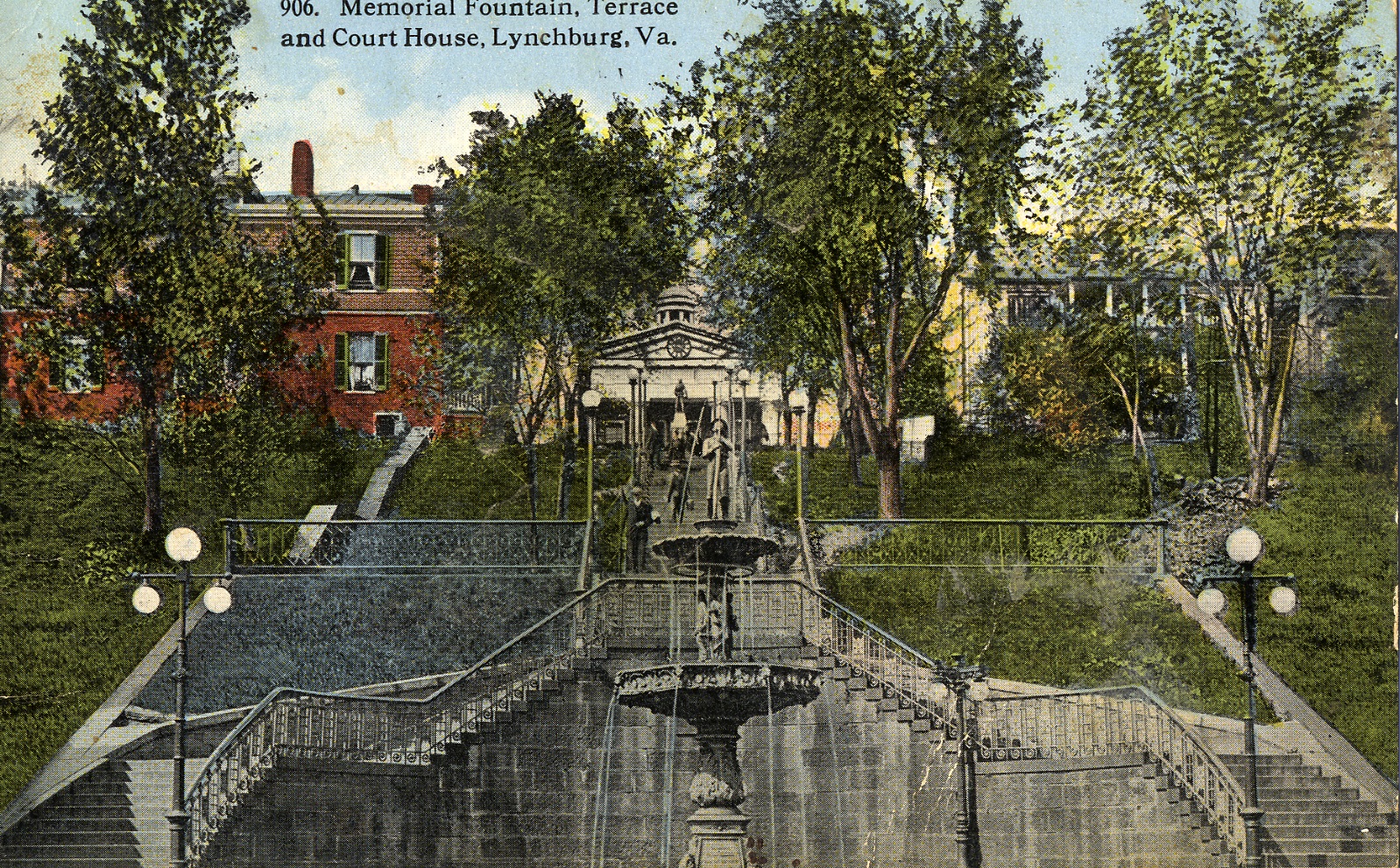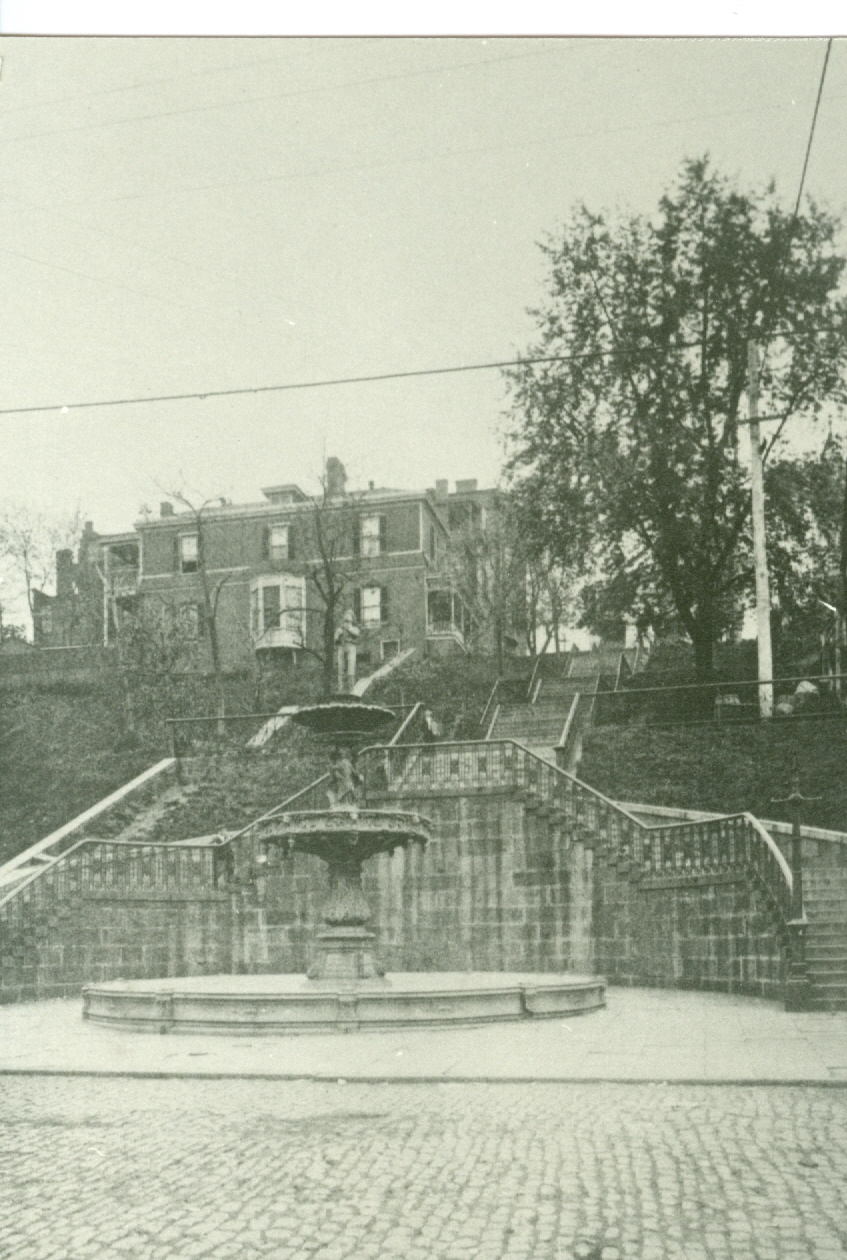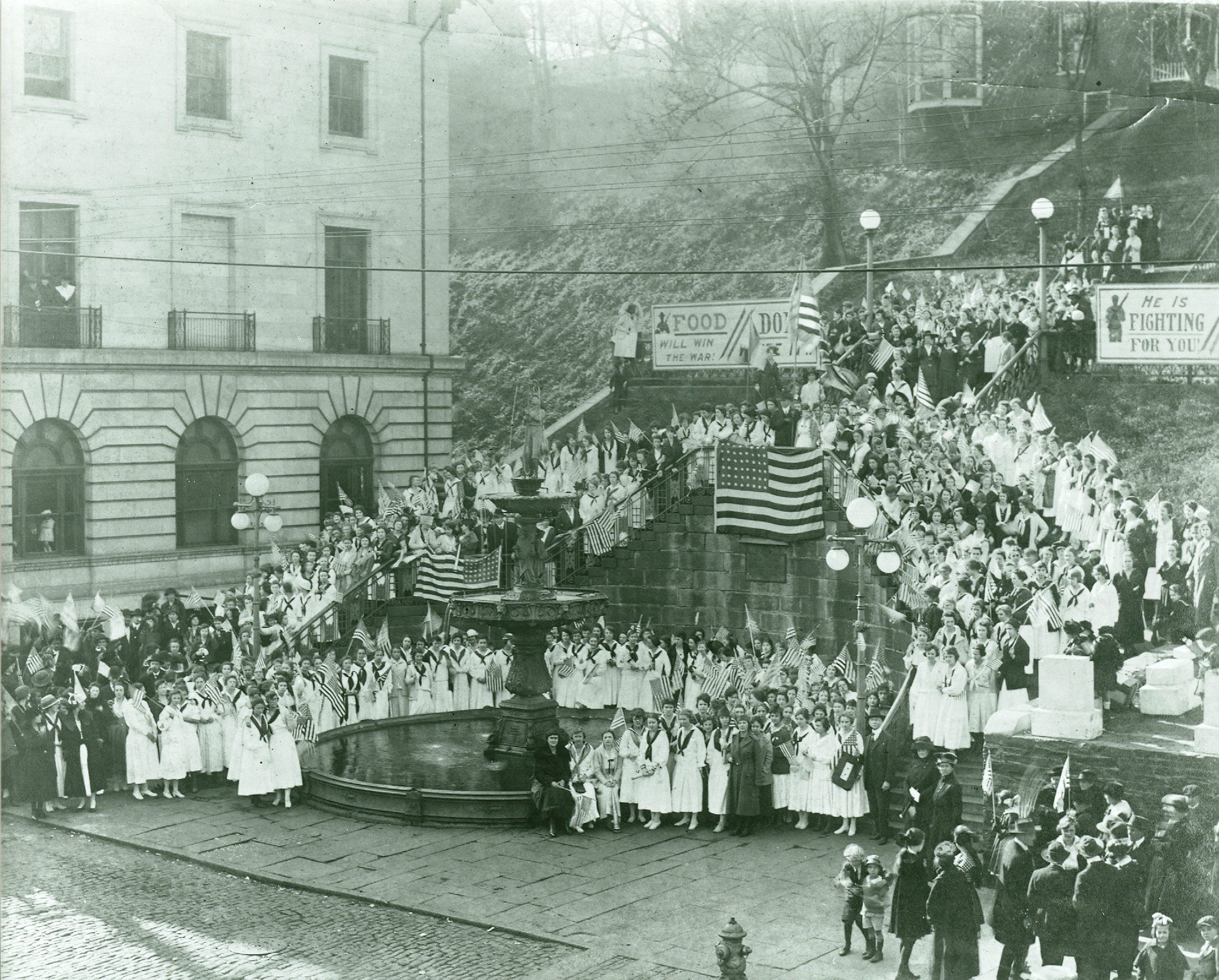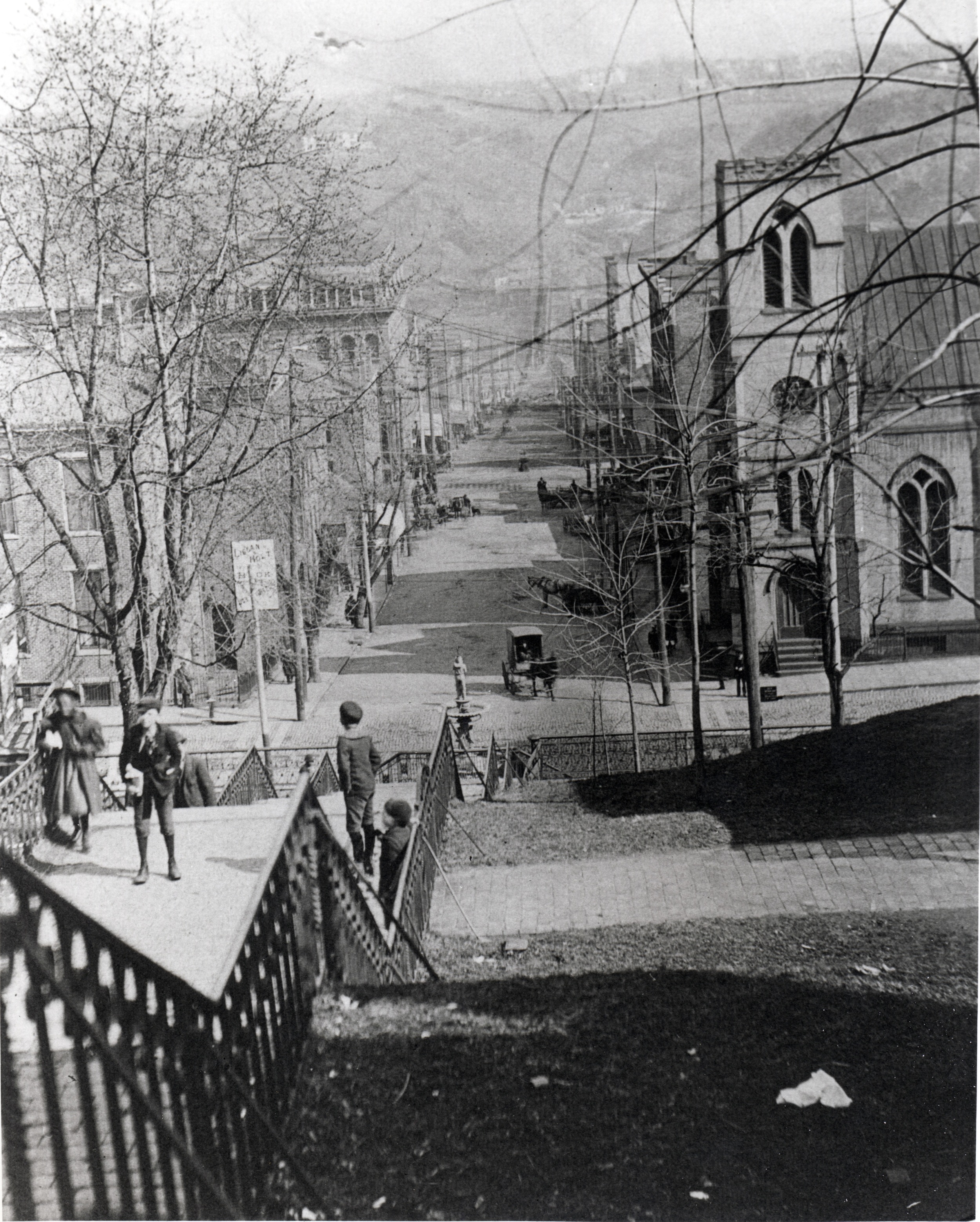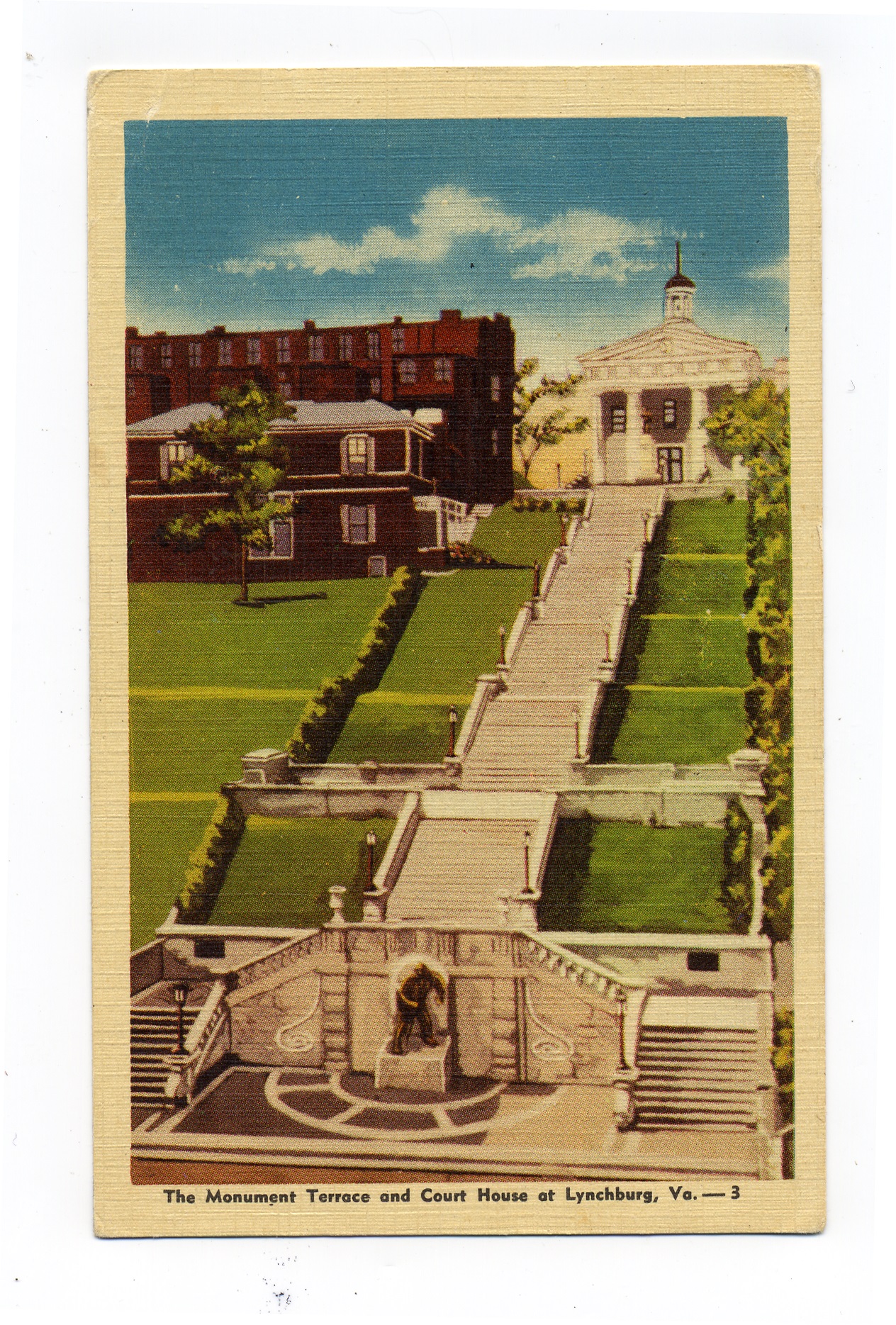In true Hill City fashion, Lynchburg’s “public square” is a vertical series of terraces climbing one city block from Church to Court Streets. Although it was conceived as a grand war memorial, Monument Terrace is also a practical set of pedestrian steps that connect two busy downtown streets, the Lynchburg Circuit Court Clerk’s Office, First Unitarian Church, and Mr. Elder’s Rose Garden. The National Register for Historic Places describes Monument Terrace as “one of the most impressive urban focal points in Virginia.” The entire ensemble of terraces, with the Doughboy statue and pool at the bottom and the 1855 Old Court House at the top, is the iconic heart of downtown Lynchburg.
Despite its massive stonework and imposing heights, Monument Terrace is a lively crossroads of urban life in Lynchburg. Tourists taking photographs along the terraces mingle with employees walking between businesses, downtown residents climbing the steps for exercise, brides taking formal portraits, a weekly veterans rally, and occasional vigils, marches, protests, and gatherings for every type of cause.
Over the decades, Monument Terrace has been host to a number of annual events and special occasions, including a community Christmas tree, local art show, and “flower mart.” It remains one of the most cherished civic spaces in the Hill City today.
Brief History
Ninth Street Steps
Monument Terrace was first developed as a public space in the early 1880’s. August Forsberg, the city engineer, was asked to provide a better route for citizens to move along the steep hill between Church and Court Streets. Forsberg designed a series of steps and landings down from Court Street that culminated in a large semicircular staircase at the intersection of Ninth and Church Streets. In the center of the stairs he planned a simple iron fountain.
On May 30, 1883, Lynchburg experienced a tragic fire in which five firemen were killed. Forsberg’s simple fountain was redesigned to add a fireman’s statue as a memorial to the men who lost their lives. This began Monument Terrace’s long history of honoring those from Lynchburg who gave the ultimate sacrifice.
Modern Monument Terrace
In the early 1920’s, energized by the economic prosperity of the decade and the new “city manager” form of local government, the Monument Terrace we know today began taking shape. Lynchburg’s first city manager Edward A. Beck is credited with originating the idea of transforming the old Ninth Street Steps into a modern civic space and memorial for local men who served in the recent “World War.”
Designed by local architect Aubrey Chesterman, the new plan called for a monumental set of steps and terraces made of Indiana limestone in Beaux-Arts and Renaissance Revival style. At the bottom of the steps, the Fireman’s Fountain was replaced with a new fountain featuring a large bronze dolphin, four turtles, and a scalloped shell backdrop. The project began in 1924 and was completed in the summer of 1925 at a total cost of $50,000.
“The Doughboy”
The dolphin fountain was soon replaced by a bronze statue by Charles Keck, officially titled “The Listening Post.” Commonly referred to today as “The Doughboy,” it depicts a typical American infantryman on the Western Front:
“The figure of the soldier at a listening post in the trenches is in full trench equipment. Alert and listening for the enemy over the parapet of the trench, he stands in heroic mold, being about eight feet tall. […] His right hand grips the rifle and his left hand holds on to the parapet, while he is in the position of listening for the approach of the enemy.” (The Lynchburg News, 4 July and 10 October 1926)
The News’s editors called Keck’s memorial “grim, yet inspiring.” The names of the 43 local soldiers, sailors, and marines who died in World War I are etched in limestone behind the bronze sculpture. The work was officially unveiled and dedicated on November 11, 1926, “in honor of the men of Lynchburg, Virginia, who served in the World War, 1914–1918.”
War Memorials
In 1986, as part of the city’s bicentennial anniversary celebrations, new memorials for World War II, the Korean War, and the Vietnam War were added to three of the “empty” terraces. Following the design of the World War I memorial, the new memorials included the names of every local man who died in each war.
Since 2000, additional memorials for prisoners of war (POW), those missing in action (MIA), and Purple Heart recipients have been installed. A bronze plaque recognizing those who died in the Gulf War (1990–1991) and Global War on Terrorism (2001–2021) was added in 2024.
Individual Terraces & Monuments
Monument Terrace Photo Gallery
